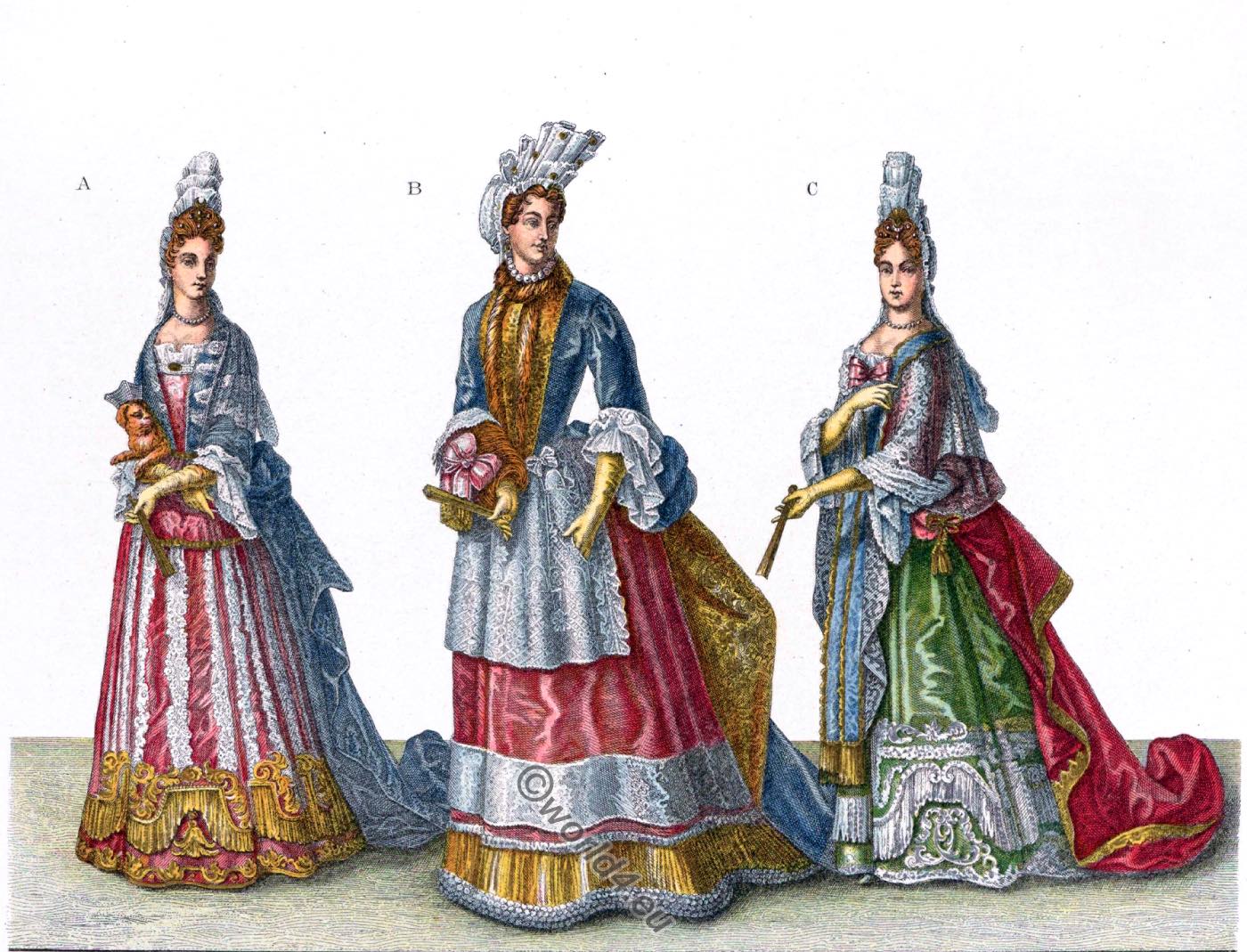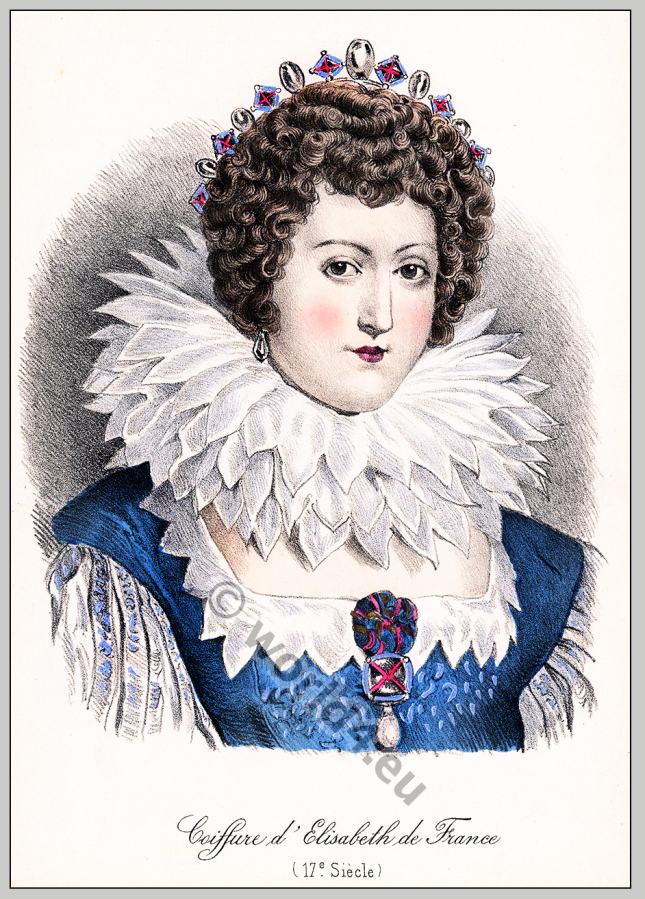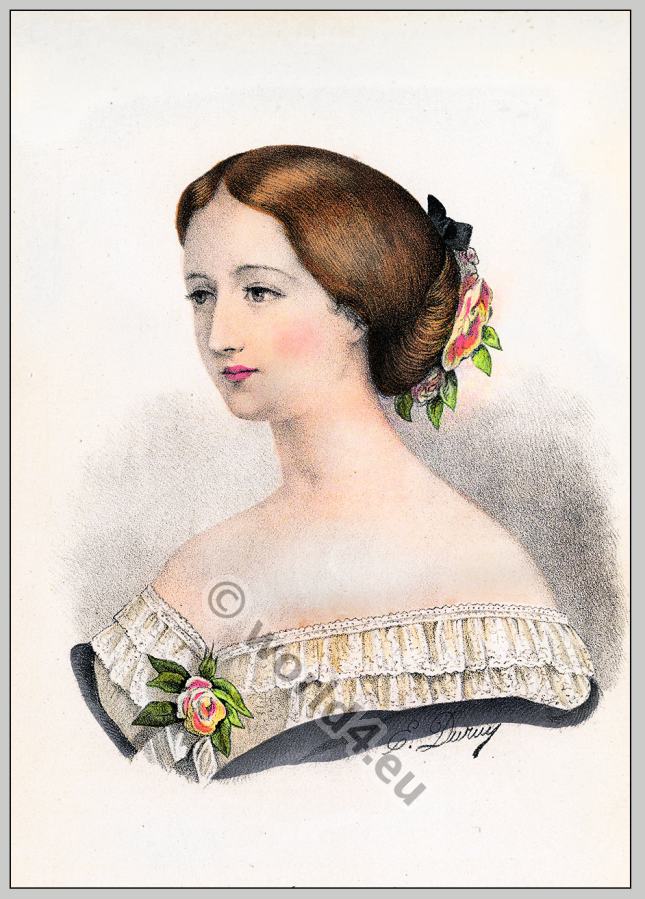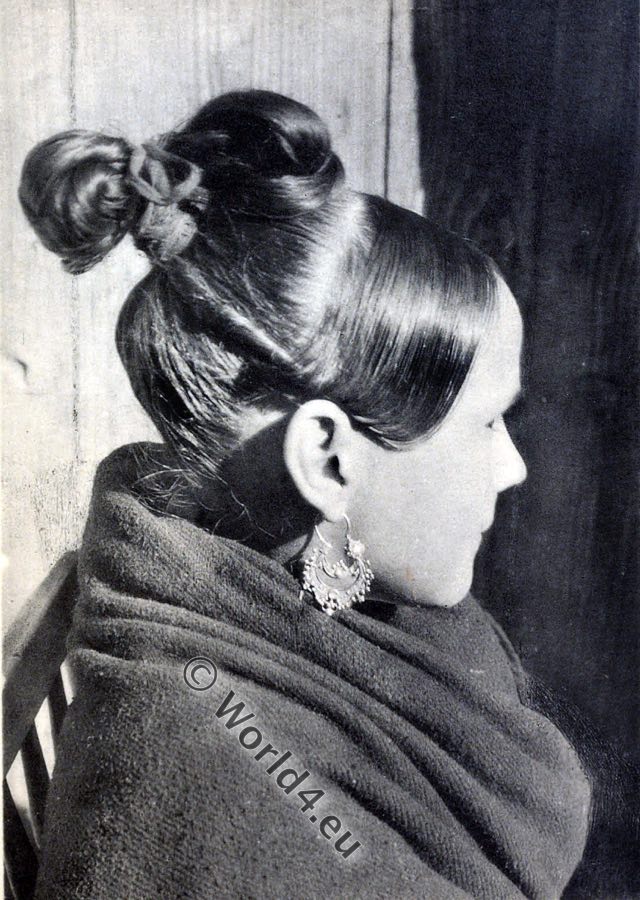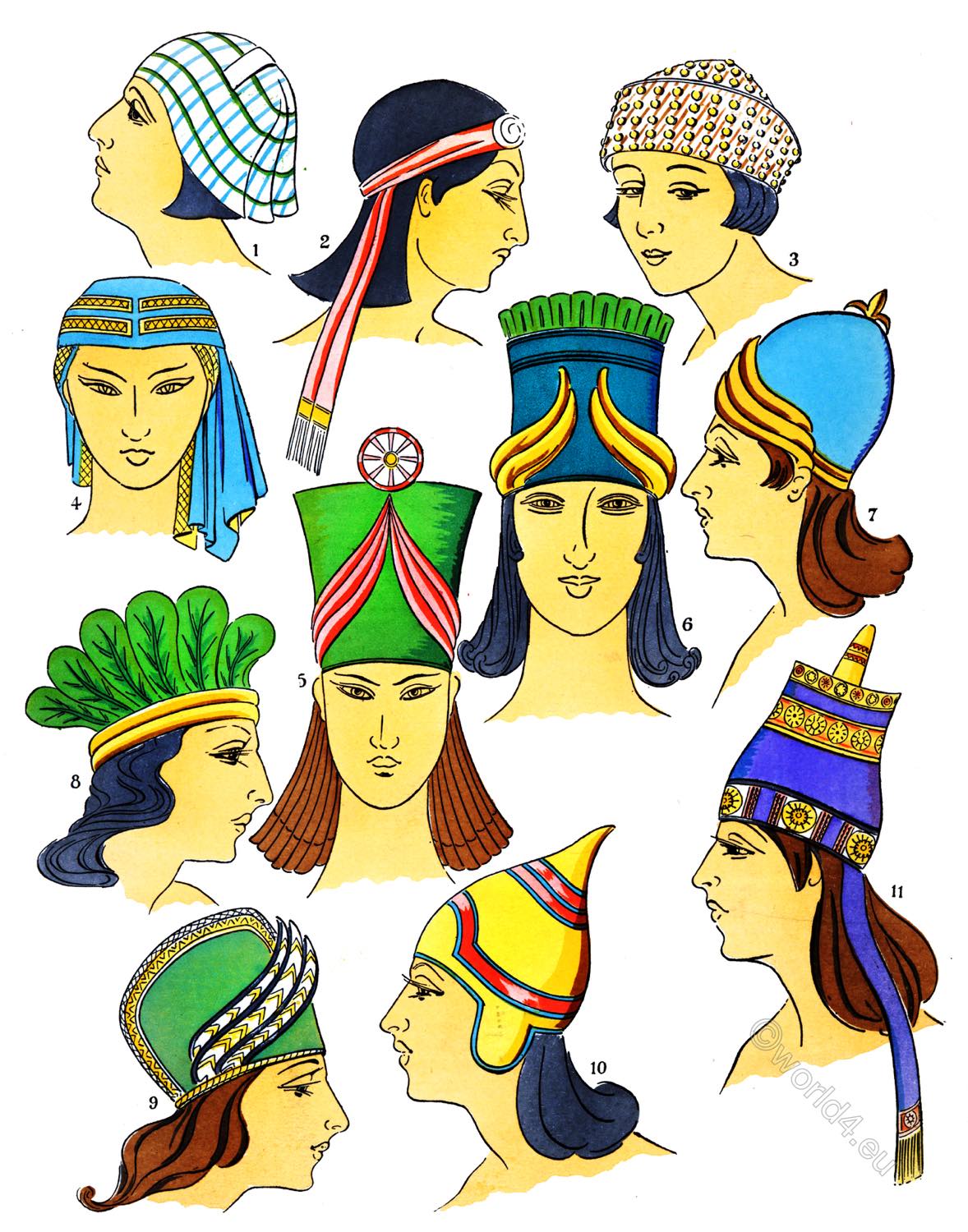
The Luxurious Assyrian Costumes.
Coiffures, Hats.
Part V. Assyrian. Plate 7.
1. Modest coiffure draped behind, of broad-checked material.
2. Woman’s hair confined in a narrow band, the two fringed ends of which hang low down on one side. On the forehead, an embroidered and beaded motif adorns the band.
3. Small Chaldean hat, with the crown covered by the tucked-up brim. This coiffure is adorned all over with simila motifs in the shapes of discs.
4. Woman’s embroidered coiffure, tightly covering the top of the head and falling on one side like a veil.
5. High “hat-crown” worn by the Assyrians, with symmetrical trimming and cockade set in the centre, on the top of the hat.
6. Hat-shaped coiffure with scrolled trimming about the base and wreath of foliage in the upper part.
7. Assyrian King’s coiffure in the shape of a helmet, with gold flower; also worn by his spouse.
8. Wreath of leaves fixed by a double band round the head.
9. Cap with original helmet, trimmed in Assyrian fashion.
10. Pointed cap of stuff embroidered with galloons in several colours. Two side lappets are tucked down to protect the ears.
11. Royal tiara adorned with rosaces and geometrical lines. Two fringed flaps descend on the sides.
The Mitre, The Hat and the Coiffure.
PHRYGIA. – It seems that the famous Phrygian bonnet attributed sometimes to the Greeks, sometimes to the Tibetans or to the Mongols, was really of Assyrian origin. This kind of bonnet was not always the felt Pilleus worn by the Greeks and Latins, but was also a pointed fur bonnet worn by men and women alike, the same as the mitre, which was not reserved for royalty.
CHALDEA. – Chaldean women wore their hair separated into tresses, and held up over the forehead by a ribbon from which hung, thick, short plaits which were allowed to dangle, except for those on the outside, which were drawn back behind the neck into a pigtail, an arrangement. which gave them a rather Bohemian appearance. They wore on their heads a small (ight- fitting skull-cap, around which they wound a cloth or veil, thus forming a ‘very simple type of turban. This served a twofold pur- pose, as it could be unfolded at will.
THE HAIR. – The hair, as far as we can judge from the Assyrian works of art, was very curiously arranged. It was carefully combed over the head and down the neck, where it terminated in a sort of chignon formed from a mass of curls, resting on the shoulders.
THE TIARA. – Rich women either went bareheaded or else wore the Tiara. The Tiara was cone-shaped, and as it exactly fitted the shape of the head, it is supposed that it was made from some flexible material. In the centre of this crown, there rose up a small cone, and the ensemble was an exact replica of the present day Persian hats, which, as is well known, are of black astrakan fur, and are provided at the top with a little cone of Indian silk or red cloth.
But the Tiara of the kings and queens of Assyria was most certainly not made from the skin of any animals, for we see from the bas-reliefs, that is was adorned with designs painted a red colour. Two narrow red bands projected from the back lo- wer edge of the tiara, passing over the shoulders, and hung down the back. They were finished at the ends with a fringe, and shed light upon the origin of the bands attached to the mitre of a Christian bishop.
Frequently the Tiara was adorned at the sides with a pair of bull’s horns, between which was set the ordinary fleur-de-lis.
THE DIADEM. – The diadem, or bandeau was adorned with rosettes, and was wider in front than at the back. The highest portion – the centre of the front – was adorned with a large rosette, while the rest of the bandeau was embellished with rosettes in decreasing sizes.
Continuing
Discover more from World4 Costume Culture History
Subscribe to get the latest posts sent to your email.


